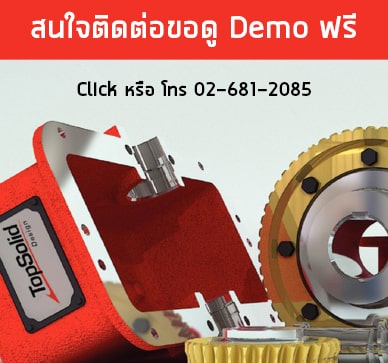In die casting, parts distortion and stresses are complex and difficult to predict, but plays a vital role from assembly or life cycle point of view. Cast-Designer stress module helps die designers to predict distortion & stresses at the early stage to ensure the accurate dimensioned parts and long life of the casting part. Cast-Designer stress module can be used in all type of casting manufacturing process.
Industry requirements
In order to reduce scrap and production cost, casting part should meet the required specific geometric dimension and tolerances (GD&T). Designers of castings must design for specific dimensions and stress requirements. There are multiple factors, which can lead to intolerance dimensional and results in to scrap. Cast Designer stress module helps to understand such behavior which can reduce part rejection and scrap later.
Cast-Designer part base stress analysis
Cast-Designer helps die designers to predict the dimensions of a die cast part after cooling/solidification and thus reduce the scrap and production cost. Cast Designer stress module helps to design casting part with close tolerance and thin wall sections, which is the requirement of casting industry.
Cast Designer result prediction helps an engineer to provide the correct dimension at DFM stage, as designer knows the after cooling effect in advance, which eventually improves part accuracy and reduce product development cost and time.
Benefits
- Design casting part with accurate dimension within permissible allowances
- Improve casting quality reduce scrap & development time.
- Reduce operation cost due to improved first shot capabilities and fewer numbers of interruptions.
Example

The above LCD back casing made by magnesium, the right picture shows the initial design. The main request is the distortion range of the final part should be controlled within -1.00mm to 1.00mm for the assembly. However, this is quite difficult as the engineering experience.
To achieve this, the traditional method is using numerical simulation in the casting simulation code. Generally speaking, the casting CAE simulation software can do that well usually if it is based on the FEM technology and with mechanical stress analysis module. However, some basic conditions must be fulfilled.
a) Full 3D mould data is required. However, this is usually difficult for the product design stage, because the product designer was not die designer and tool maker, also it is impossible to spend so much time for the 3D modeling.
b) Detail casting parameters are required. To perform a detail stress analysis with module, this is the basic requirement. Also, very difficult to product designer.
c) Long CPU time is required. For stress simulation, due to more DOF of the model, much more CPU time than the filling and solidification is required.
Cast Designer’s part base stress and distortion module has solved all above problems.
Result discussion

The above figure shows the distortion of the LCD back casing after cooling down to room temperature. As the simulation, the distortion range of the final part was between -1.42 to 1.95mm. The right picture shows the distortion with original part with 5 times enlarge of the warp. It is clear, such design out of the requirements of assembly quality. Such simulation takes around 50 minutes on an Intel i7 machine.

Then, the product designer made some modification of the part, mainly adjusted the type of ribs and wall thickness on the back of the casing. Then perform a new simulation again. Now, the distortion result has been reduced to half, the distortion range between-0.92 to 0.97mm.
Usually, changing the original part design is the most economic method during the whole manufacturing chain.
Cast-Designer provides detail information of the part, such as temperature distribution during the cooling, stress and strain, hot tearing for crack checking and SDAS for part strength evaluation.




